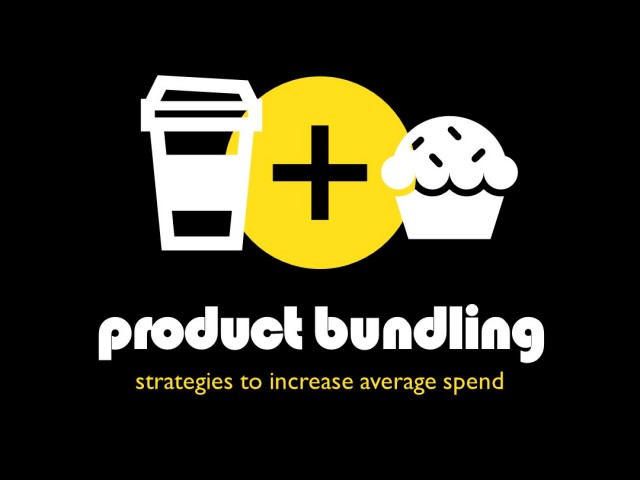Increasing average spend with product bundling
Jul 30, 2020, 6:28 AM
Product bundling is a great way to increase average spend. If transaction/customers numbers are reasonably consistent (day-to-day or week-to-week) and the advertising budget is low, then it is even more important to extract as much revenue as possible from each transaction.
1. Goal
The primary goal of product bundling is simply to increase average spend. It is something that every food business should be striving to do. A secondary goal might be to get customers to try new products. From a customer’s perspective, product bundling creates a heighten sense of perceived value and helps to improve customer experience by underpricing and over delivering.
2. Strategy
Strategy 1: The classic approach
The most common bundling strategy is to choose products which are complementary and are frequently purchased together. Classic examples include meat pie & cola, burger & fries, and coffee & cake.
Of course, if items are frequently bought together then discounting them will lose money unless you increase volume (i.e. convert more customers to the bundle). But, the advantage of choosing products which are frequently purchased together is that you can apply a lower discount because the extra incentive required to convert customers to the bundle will be less.
To increase the number of customers choosing the bundle, you can vary this strategy to combine bundling with upselling. That is, offer a premium or upsized item within the bundle since it heightens perceived value and helps to convert those customers that were not going to purchase both items.
Strategy 2: Ulterior motives
An alternative bundling strategy is to choose products which are complementary but not often purchased together. The disadvantage of this strategy is that you may need to discount the bundle more significantly to entice customers to take up the offer.
The advantage is that it can be used to help achieve other objectives. For example, to clear stock or get customers to try new (or other) products. This bundling approach can be used as a strategy to get customers ‘hooked’ on higher price point items with the hope that when the bundle is stopped customers will still purchase these items and permanently shift your average spend higher.
3. Execution
Choosing what’s in the bundle?
Firstly, if you’re adopting the classic approach, check your sales data. What products are frequently purchased together? If you work in the business, you probably have a good idea (also ask your staff).
Secondly, at least one of the products should be a high volume, low price point item (e.g. coffee). A high volume gives you more chance/opportunity to convert a customer to the bundle, and the low price point helps to keep the bundle price down.
Finally, check your costings to ensure you’re still making money after the discount is applied. It is best to use (at least) one high margin item as it gives you more ‘room’ for a discount.
Promote
Promote your bundle using your social media and in-house advertisements. Emphasize the cost saving to the customer to help simplify the decision-making process but use a percentage rather than a number since it will appear larger (e.g. 25% looks better than $2). It’s wise to let customers know before they get to the ordering/POS/checkout. By that time, their decision is already established and it can be difficult to sway them. Still mention the bundle at the POS but don’t push as it can ruin the customer experience.

